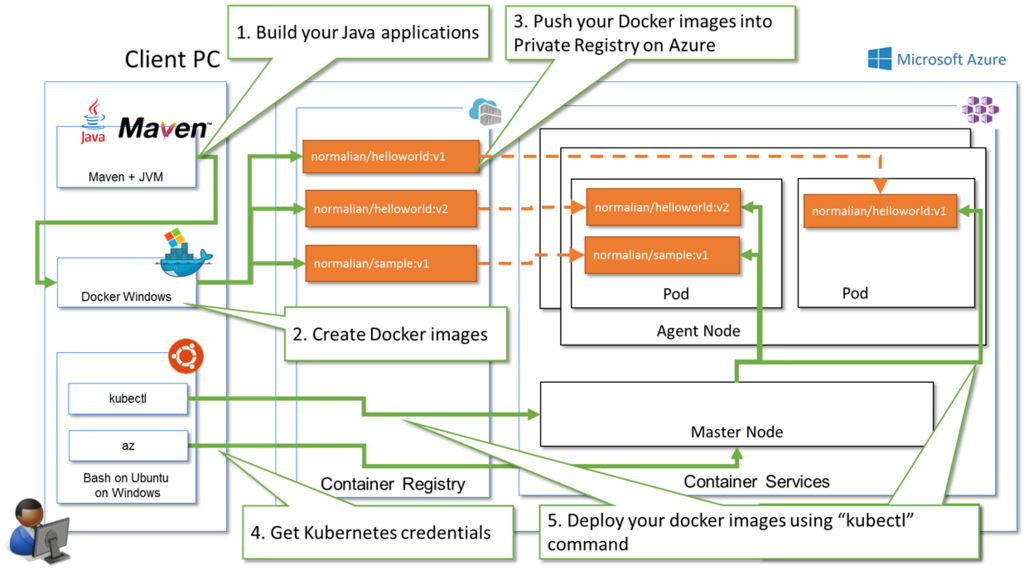For local development and testing, you can run Pulsar in standalonemode on your own machine within a Docker container. Command line tools high sierra.
To install a specific version of Docker, start by listing the available releases. Type the following in your terminal window: yum list docker-ce -showduplicates sort –r. The system should give you a list of different versions from the repositories you have enabled above. Install the selected Docker version with the command. If you do not have Docker installed, you may follow these instructions to install it on your system. Verify that Docker is installed by running $ docker -v Docker version 17.06.0-ce, build 02c1d87.
If you have not installed Docker, download the Community editionand follow the instructions for your OS.
Start Pulsar in Docker
For MacOS, Linux, and Windows:
A few things to note about this command:
- The data, metadata, and configuration are persisted on Docker volumes in order to not start 'fresh' everytime the container is restarted. For details on the volumes you can use
docker volume inspect <sourcename> - For Docker on Windows make sure to configure it to use Linux containers
If you start Pulsar successfully, you will see INFO-level log messages like this:
Tip
When you start a local standalone cluster, a public/defaultnamespace is created automatically. The namespace is used for development purposes. All Pulsar topics are managed within namespaces.For more information, see Topics.
Use Pulsar in Docker
Pulsar offers client libraries for Java, Go, Pythonand C++. If you're running a local standalone cluster, you canuse one of these root URLs to interact with your cluster:
pulsar://localhost:6650http://localhost:8080
The following example will guide you get started with Pulsar quickly by using the Pythonclient API.
Install the Pulsar Python client library directly from PyPI:
Consume a message

Create a consumer and subscribe to the topic:
Produce a message
Now start a producer to send some test messages:
Get the topic statistics
In Pulsar, you can use REST, Java, or command-line tools to control every aspect of the system.For details on APIs, refer to Admin API Overview.
In the simplest example, you can use curl to probe the stats for a particular topic:
The output is something like this:
Welcome to Apache Zeppelin! On this page are instructions to help you get started.
Requirements
Apache Zeppelin officially supports and is tested on the following environments:
| Name | Value |
|---|---|
| OpenJDK or Oracle JDK | 1.8 (151+) (set JAVA_HOME) |
| OS | Mac OSX Ubuntu 16.X |

Downloading Binary Package
Two binary packages are available on the download page. Only difference between these two binaries is interpreters are included in the package file.
- all interpreter package: unpack it in a directory of your choice and you're ready to go.
- net-install interpreter package: unpack and follow install additional interpreters to install interpreters. If you're unsure, just run
./bin/install-interpreter.sh --alland install all interpreters.
Building Zeppelin from source
Follow the instructions How to Build, If you want to build from source instead of using binary package.
Starting Apache Zeppelin
Starting Apache Zeppelin from the Command Line
On all unix like platforms:
After Zeppelin has started successfully, go to http://localhost:8080 with your web browser.
Install Docker Apache Php
Stopping Zeppelin
Start Apache Zeppelin with a service manager
Note : The below description was written based on Ubuntu.
Apache Zeppelin can be auto-started as a service with an init script, using a service manager like upstart.
This is an example upstart script saved as /etc/init/zeppelin.confThis allows the service to be managed with commands such as

Other service managers could use a similar approach with the upstart argument passed to the zeppelin-daemon.sh script.
Install Apache Airflow In Docker
zeppelin.conf
Next Steps
Congratulations, you have successfully installed Apache Zeppelin! Here are few steps you might find useful:
New to Apache Zeppelin..
- For an in-depth overview, head to Explore Zeppelin UI.
- And then, try run Tutorial Notebook in your Zeppelin.
- And see how to change configurations like port number, etc.
Spark, Python, SQL, and more
- Spark support in Zeppelin, to know more about deep integration with Apache Spark.
- SQL support in Zeppelin for SQL support
- Python support in Zeppelin, for Matplotlib, Pandas, Conda/Docker integration.
Multi-user support ..
Install Apache Airflow Without Docker
- Check Multi-user support
